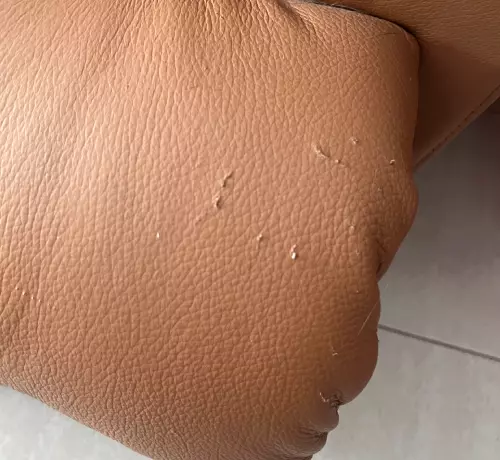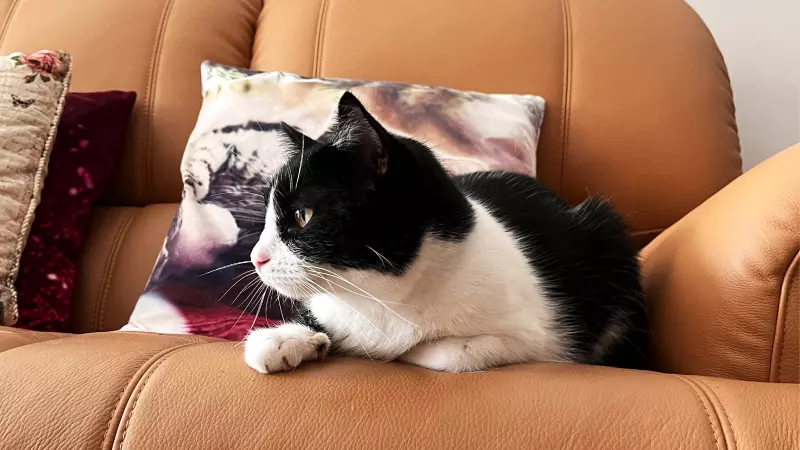How to Repair Cat Scratches on Leather
If you have ever owned any cats, you will probably agree that these furry felines largely fall under two categories. These “cat(egories)” are fluffy bundles of joy and destroyers of the universe.
These two categories are not mutually exclusive, but if your cat identifies one way or another with the latter, chances are that you’ve suffered damaged furniture and destroyed houseplants at some point in time.
While we can’t necessarily offer any tips on how you are able to resurrect dead houseplants, we can offer our expertise on how you are able to mitigate and repair damage that might be caused by your cat’s claws on leather furniture.
The most common leather household items that your cat has got its eyes and claws on likely include couches and armchairs. While newer leather couches can be made to be ‘cat proof’, 100% damage mitigation from cat claws aren’t really a thing. For what it’s worth, it is already likelier that your cat would ignore your leather couch as opposed to a fabric or tweed couch.

Also, while you are likely going to explore ways to discourage your cat from scratching expensive furniture, we strongly do not advocate declawing your cat. That can lead to a much poorer quality of life for your cat and a whole myriad of behavioral issues down the line due to constant pain that your cat can experience from declawing.
Meanwhile, if you do find yourself with a scratched up leather couch, fret not as we will outline the ways in which you can perform a repair procedure. Before you get started, here is a list of materials you will need to have handy.
- Scissors
- Leather cleaning solution
- Leather binder (optional)
- 1200 grit sandpaper
- Leather filler
- Leather dye
- Leather conditioner
We’ve created a comprehensive guide on repairing a cat scratched leather couch. The steps to repair your leather couch are summarized below for your reference.
- Trim Loose Fabric
- Clean Area of Treatment
- Apply Leather Binder (Optional)
- Smoothen Out Surface Area of Treatment
- Apply Leather Filler
- Smoothen Out Surface Area Once More
- Apply Leather Dye
- Apply Leather Conditioner
- Provide Scratching Alternatives for your Cat
1. Trim Loose Fabric
The first step that you’ll need to do before repairing the cat scratch on your leather couch is to trim the loose fabric, as you’ll need an even leather surface for this. Using a pair of sharp scissors, remove any loose fibers that will be present at the area of treatment.
To ensure as much precision as possible, it is recommended that your scissors are small in size and as sharp as possible. Having the right pair of scissors will help protect against accidental further damage on or around the area that your cat would have scratched up.
2. Clean Area of Treatment
Using your leather cleaning solution, lightly clean the area of treatment. Here, you want to remove any unwanted dirt and impurities. The next steps of this process will focus on reinforcing material binding and we want to ensure as far as possible that we are excluding unwanted impurities as much as possible.
Ensure to use a dry, absorbent cloth to dab dry and remove any remaining moisture from this step before proceeding on to next steps.
3. Apply Leather Binder (Optional)
A leather binder is meant to reinforce the molecular bonds of leather. As your couch is already damaged from your cat’s claws, the remaining leather’s surface would also have a weaker fiber structure, making it more susceptible to future damage.
While you can opt to skip this step and still repair your leather couch without application of a leather binder, choosing to include this step will make your repair efforts more long term as future breakage of your remaining leather’s surface will be minimized.
If you decide to apply a leather binding solution, you can consider multiple applications based on the product you are using. Please ensure that the solution dries out completely before proceeding to further steps.
4. Smoothen Out Surface Area of Treatment
Using a 1200 grit sandpaper, apply light to light-moderate force and sand the area of treatment down. This will help to smoothen out the entire surface, which is important as it helps to facilitate the next steps.
Keep in mind that whilst you are smoothing out the surface, deep recesses from the scratches are not meant to be accounted for via sandpapering. We will address this in our next step.
We’ve tried different grades of sandpaper on leather couches and we find that the best one for fixing cat scratches is 1200 grit. If the sandpaper is too fine, you won’t see much effect when sanding down the scratches. Sandpaper that’s too coarse is too harsh for your leather couch.
Once you are satisfied with the smoothness of the area (discounting deep recesses), lightly clean the area to remove any sedimentation that might be remaining from the sandpapering process.
5. Apply Leather Filler
Leather filler is meant to fill in any deep recesses or holes that your cat’s claws inflicted upon your leather couch. Our ultimate aim for this step is to ensure that the surface level across the entire area is as consistent as possible.
There are various types of leather fillers that are suitable to get the job done. We’ve tried the Coconix Vinyl and Leather Repair Kit & Restorer to fix catch scratches on leather and the reason why this kit is so awesome is because you’ll be able to mix the colors to match your leather couch. Moreover, it also comes with the required application tools.
Use a blunt, flat plastic instrument to apply the leather filler if you have your own. Whilst we want our final surface area to be as flat as possible, do not worry about a slight over application (we recommend a slight over application as opposed to under application) as our next step will account for this.
Leave your leather filler to dry before proceeding to the next step. This is extremely important, or you’ll remove the filler right off. Take note that some fillers may dry a little darker, so make sure to read the instructions on your product.
6. Smoothen Out Surface Area Once More
Use your 1200 grit sandpaper again for this, applying light to moderate pressure to smoothen out the surface area. This time, we want to ensure that the entire surface is flush and even with no bumps or recesses remaining.
If you are realizing that bumps are remaining, you need to further sandpaper the area down, perhaps using slightly more force. If you are still noticing recesses from the cat scratches on your leather couch, go back to the previous step and fill the recesses out with your leather filler.
Once you are satisfied with the smoothness of the area, gently clean the area to remove unwanted sandpaper sedimentation.
7. Apply Leather Dye
We want to ensure color consistency across the whole couch, and that includes the area of treatment in which we have used the leather filler on. Needless to say, please do select a leather dye that is as close to your couch’s original color as possible.
Take note that some fillers or leather fixing kits already include a dye. If that’s the case, then you can safely skip this step. However, if it doesn’t, then you’ll need to apply dye separately.
Follow the leather dye instructions from the manufacturer, and apply your leather dye to ensure a singular color tone across your entire leather sofa. Also ensure that you let your leather dye dry before proceeding.
8. Apply Leather Conditioner
Once your leather dye has dried, you can apply a leather conditioner to promote a supple and smooth texture that is comfortable for anyone to sit and rest upon. Leather conditioners also help to protect your leather couch by adding a protective layer.
Use a dry cloth to lightly apply the leather conditioner on and around the area that you have just treated. This will also help to protect your leather couch from further cracking and tearing from the loosened fiber structure that the cat scratches may have caused.
9. Provide Scratching Alternatives for your Cat
While you have successfully repaired the area of damage your furry feline has caused, you also want to minimize the need to redo this process over and over again. As with almost everything in life, prevention is better than cure and you should take precaution from further future damage to your leather couch.
It is natural that your cat will want to sharpen its claws and if your cat deems the leather couch to be the best conduit for that, you are likely not providing ‘healthy’ alternatives for your cat.
A good scratch post or even a cheap floor rug made from fibrous material are more than likely more alluring for your cat to dig its claws into. With that being said, we hope that this guide was able to help you restore and repair your leather couch from cat scratches and that you found it useful!

About Matthew
Co-Founder, Editor-in-Chief & Writer At Leatherskill
I’m a leather enthusiast turned artisan. Apart from crafting leather products, I’m passionate about writing in-depth guides and reviews on all things leather!

